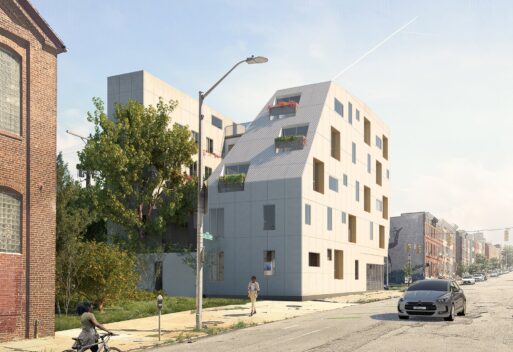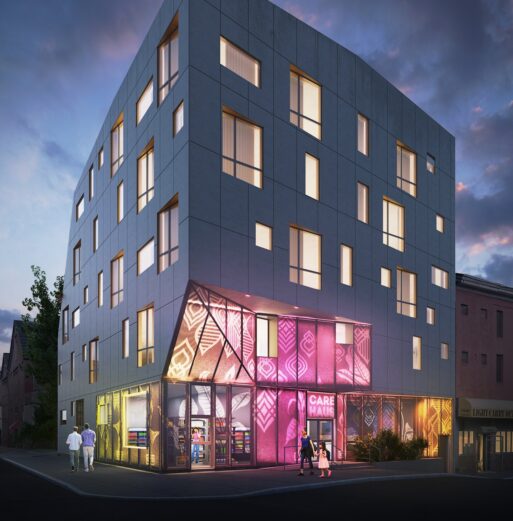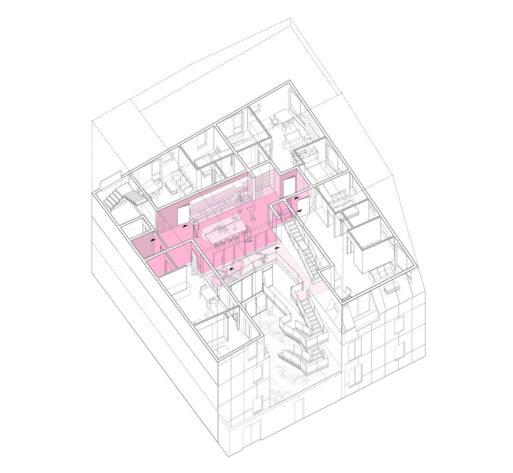
Credit: carehaus.net
While the cost of senior living facilities continues to rise, older adults are confronted with a dwindling array of affordable housing options that meet their needs. Simultaneously, there is a shortage of caregivers to support the expanding aging population. The convergence of these challenges often leaves older adults and their families struggling to secure suitable living arrangements with consistent care.
Carehaus aims to address these issues by establishing affordable apartments where disabled individuals and seniors reside in the same building as their caregivers. Their unique model of care-based cohousing pledges consistent care for seniors alongside benefits such as higher salaries, childcare and subsidized meals for caregivers.
Marisa Morán Jahn, an artist and care advocate, conceived the idea for Carehaus with the intention of celebrating and honoring care through architectural design. Her artistic endeavors have shed light on the myriad challenges faced by caregivers in their profession.
Caregivers often endure long, physically demanding and emotionally taxing hours. Predominantly comprised of minorities and women with immigrant backgrounds, they are entrusted with essential tasks ensuring the comfort and well-being of their clients. However, caregivers are not adequately compensated for their contributions, leading to financial insecurity and housing instability for many. This discrepancy between workload and low wages contributes to high turnover rates within the industry.

Carehaus.net
Motivated by their personal experiences grappling with caregiving and housing for aging loved ones, Jahn reached out to Rafi Segal, an architect and associate professor at MIT, to develop a building plan that would benefit both caregivers and older adults requiring assistance at home.
The Carehaus Approach
At Carehaus, fostering an environment of dignified care begins with recognizing the value of caregivers’ labor. Residents employed as caregivers will receive wages exceeding industry standards, along with subsidized meals, housing and childcare. Additionally, the elimination of commuting concerns allows caregivers to devote more time to their duties when on the clock and more time to spend with their families after clocking out.
The architectural design acknowledges the challenges associated with living and working in the same space, prioritizing caregivers’ and their families’ privacy while promoting community engagement through abundant communal spaces on every floor. Individual units are provided for both caregivers and seniors, with opportunities for socialization through communal meals and creative arts programs.

Communal space highlighted in pink
Credit: Carehaus.net
Accessibility features are integral to the Carehaus design, including the elimination of narrow corridors that may confuse older adults with memory loss. Each floor employs a specific color theme to aid in orientation.
Jahn and Segal aimed to depart from the conventional appearance of senior living facilities, opting for a modern aesthetic that could easily be mistaken for a luxury apartment building. Design elements such as ample natural light, vibrant color schemes and modern art displays contribute to this contemporary look.

Art piece to be on display at Baltimore location.
Credit: Carehaus.net
Carehaus will commence its inaugural housing development project this summer in Baltimore’s Johnston Square neighborhood, comprising 21 units accommodating 12 seniors and four caregivers with their families.

 Honoring Seniors, Caregivers: Inside the Vision of Carehaus
Honoring Seniors, Caregivers: Inside the Vision of Carehaus


 How Dare You Die Now!
How Dare You Die Now!

 “Help Me, Helen”
“Help Me, Helen”














